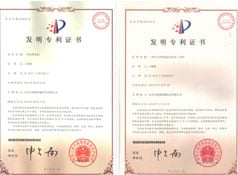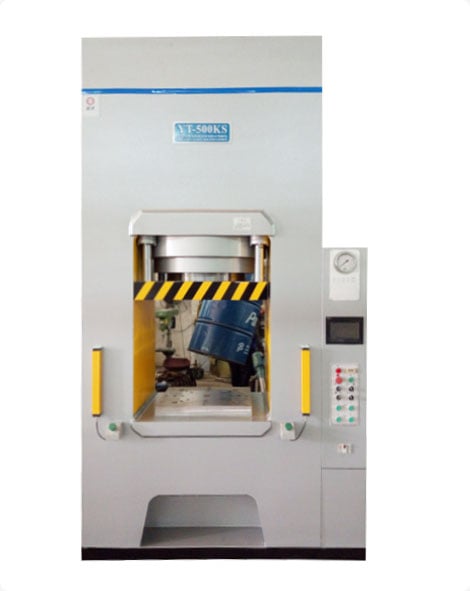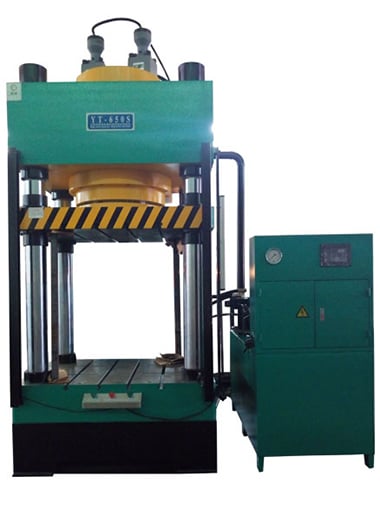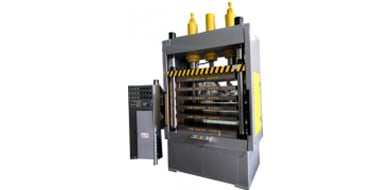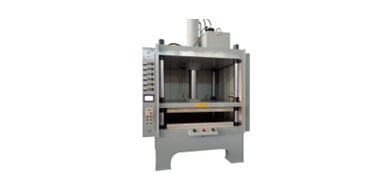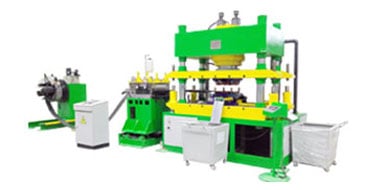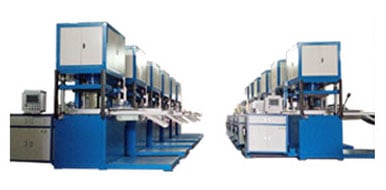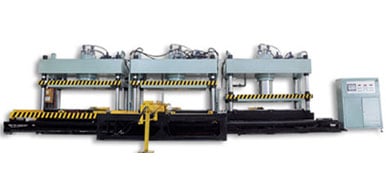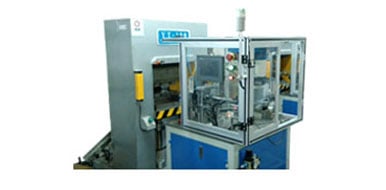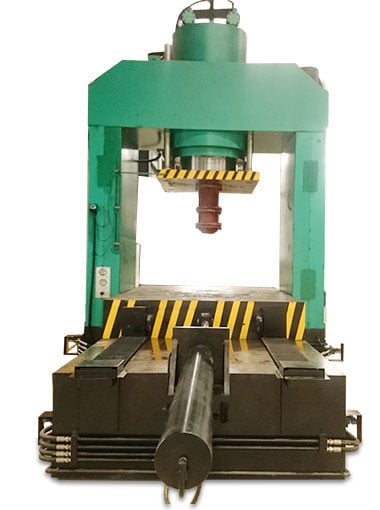How to Make a Hydraulic Press for Forging
time:2023-07-28 views:(点击 955 次)Forging involves applying force and deforming hard metals to achieve specific tolerances and shapes. There are various techniques used for forging, but hydraulic presses provide the most effective result.
These machines operate efficiently without the need for costly mechanical parts, making them the go-to choice for industrial processes.
1. Hydraulic Cylinder
Hydraulic forging presses have the capability to create larger parts than other forging presses due to their slow operation and longer contact time with the workpiece, enabling their ram to exert greater pressure onto it to shape it into its desired form.
Forging creates directional grain flow that increases strength while at the same time making pieces more ductile; these qualities give forging an advantage over welding or machined parts which may have weak spots or cracks that compromise their strength and ductility.
To run a hydraulic forging press effectively, you will require various components: 1. Hydraulic Cylinder 2. Hydraulic Pump 3 4. Anvil 5 Forge Press 6 Manual Control Valve 7. Limit Switch 8. Safety Door 9 Relief Valve 10 Pressure Gauge
2. Hydraulic Pump
Forging is the process of deforming metals by applying pressure, providing an alternative to traditional hammer-and-anvil methods and producing metals with higher ductility than their raw state, such as titanium and magnesium alloys.
A forging press requires a hydraulic pump to create the force required to deform metals, and should be designed accordingly with manual control valve, safety door, limit switch and pressure gauge features.
Save money and shop junkyards or auctions for used hydraulic pumps. A 10 horsepower motor should provide enough power to handle the pressure necessary for forging. A hi-lo pump is best because it pumps at high flow/low pressure while the cylinder expands or contracts, then changes back to low flow/high pressure when pressing force is increased.
3. Oil Tank
Forging is the process of shaping metal into malleable form through heat and pressure. It can be used for personal or commercial applications.
An expensive hydraulic forging press can be prohibitively expensive to purchase; however, you can build one on your own for much less expense by recycling an old tank as the base and covering it with insulation wool for insulation. Doing it this way will save money while still giving you access to various forging operations.
Make use of these free plans on Youtube to turn a propane grill into a forge! This eco-friendly idea keeps valuable materials out of landfills while offering beginners an accessible entrypoint into blacksmithing as either a hobby or money making venture. Be mindful when using this type of forge; its output gases may contain toxic fumes.
4. Anvil
An anvil is the cornerstone of blacksmithing, used to shape metal with a hammer. For optimal performance it must be hard and responsive to repeated strikes from sledgehammers; an ideal anvil will ring and rebound upon impact with such strikes.
Concrete may seem like a perfect material for creating an anvil, but its durability does not stand up well when subject to heavy use. By adding vertical ribs or rebar networks into the mix, grip will be increased dramatically and prolong its service.
Railroad scrap steel makes an excellent anvil material, which you can obtain either free or cheap from scrap yards. When choosing an anvil material make sure it has flat faces with rounded edges, as well as clean hardy holes and pritchel holes; additionally chamfer the edges to reduce chipping risks.
5. Die
Die settings determine the shape and form of a final product. They must closely correspond with desired configuration while taking into account material characteristics like ductility and strength; otherwise they could result in bulging and distortion that compromise its intended function.
The upset forging process uses compression to alter metal grain flow and enhance tensile strength, as well as eliminating defects such as porosity and shrinkage.
Closed die forging produces near net shapes without additional machining, yet can be expensive due to large equipment requirements and needing specialty materials. Furthermore, this method cannot create parts with complex exterior designs or intricate internal cavities due to forging limitations caused by lower melting points than steel as well as different cooling rates than expected during production.
6. Hydraulic Cylinder Valve
Hydraulic cylinder valves are used to manage the flow of hydraulic fluid. If system pressure fluctuates too far beyond acceptable range, the valve unseats and opens to let excess fluid exit, thus protecting dies from being over-pressed and damaging themselves.
Finding an economical forged cylinder manufacturer is key when searching for high-quality products at a fair price. Furthermore, companies that can fulfill both large and small orders efficiently should be sought out, along with one who works with various types of metals to meet individual customer requirements. Should any queries arise concerning this, feel free to reach out - we would love to assist.
7. Safety Door
Forged metal has an uninterrupted grain structure, which gives it more tenacity and strength while at the same time offering superior elasticity and reducing transfer distortion.
When building a forge at home, it is vital to wear natural fiber work clothes and use safety glasses made from glass fibers. Furthermore, always ensure your workspace has adequate ventilation in order to avoid carbon monoxide build-up.
Hydraulic presses can be used for many different applications, including clinching, moulding, punching, deep drawing and metal forming. They can be operated manually or with the aid of a hydraulic control valve and have several safety features such as a safety door, limit switch, manual control valve and relief valve to protect users against injuries during forging processes as well as maintaining accurate die contact time and maintaining accurate die contact time measurements. Safety mechanisms are essential components for all metalworking operations and should be checked frequently to detect damage or wear and damage or wear and
8. Limit Switch
The Forge is used to transform materials into refined products that can be more useful. Survivors can create advanced Tools, Building Materials, ammunition components and Resources using this resource. However, operating it takes both time and fuel; survivors can smelt raw materials like Iron into it to use.
Servo motor forging presses offer precise control over the speed and position of their position siding block, making them capable of creating difficult-to-form parts with high quality while saving energy and being environmentally-friendly.
Flow+ limit switches are durable and perform reliably through many cycles, making them suitable for heavy industrial use. They come with various voltage ratings and contact types, making Flow+ limit switches suitable for oil and gas, mining, process chemical and general industry applications as well as AC and DC applications.
9. Manual Control Valve
Manual control valves give you the power to regulate both speed and pressure of the ram, making this an invaluable feature when creating multiple identical parts that need equal pressure application.
Hydraulic presses use water pressure to exert force against metal, pushing down on it with precision. They work best when used with "open die," meaning the ram presses down onto a flat surface; dies act like molds that shape metal into desired forms. Unfortunately, hydraulic presses don't perform well with hot forging processes.
Karl Metalworks shows us how to build an incredible homemade 40-ton hydraulic forging press. The machine boasts some serious stamping power! However, the forging process requires staying in contact with metal for an extended period.
10. Relief Valve
Hydraulic forging presses are machines designed to use immense force to shape metal pieces, such as airplane parts. There are various different kinds of hydraulic forging presses on the market that range from mechanical presses up to machines capable of holding over 50 tons.
Hydraulic forging presses perform best with "open die," which involves pressing metal onto a flat surface using pressure from an "open die." However, closed die use molds to shape metal into certain forms. While isothermal applications benefit from closed die, hot forging doesn't. Overall, hydraulic forging presses are reliable machines designed to produce complex shapes of high-quality metal products with ease and consistency.
Link to this article: https://www.ihydraulicpress.com/nsn/4060.html
Hot Articles
-
How to Make Almond Oil With Hydraulic Press
Almond oil, produced from the seeds of the almond tree (Prunus dulcis), is widely believed to provide relief for skin conditions like eczema. Due to……
-
Hydraulic Press YouTube Channel
Hydraulic Press channel has quickly become a cult hit with an enthusiastic following since its initial debut on Reddit; seeing an exponential increa……
-
What Can I Make With a Hydraulic Press?
Hydraulic presses are indispensable tools in nearly all large scale industries and workshops often boast their own c-frame hydraulic press for use……
-
How to Make a Hydraulic Fruit Press
Hydraulic fruit presses provide an efficient method for making homemade apple juice at home, saving both money and producing high-quality cider. W……
-
How Much Force Can a Hydraulic Press Generate?
Hydraulic presses have many industrial uses, from metalworking to woodwork. Since they generate enormous force, hydraulic presses make a perfect t……
-
Who Makes Black Widow Hydraulic Press?
There is a wide selection of hydraulic presses on the market today. However, certain models tend to stand out more than others. Knowing this diffe……
-
How to Make a Homemade Hydraulic Press
If you require large amounts of pressure in your garage, consider building your own hydraulic press – this project is relatively straightfor……
-
How to Make a Hydraulic Press Juicer
Hydraulic press juicers are specialized juicing machines that employ hydraulic pressure to extract juice from raw produce. There are various model……
Latest News
-
Can You Make a Tortilla With a Hydraulic Press?
Hydraulic presses are tools designed to deform metal into desired forms by applying full force at each stroke, so as to achieve their purpose of def……
-
How to Make a Hydraulic Press Model
Hydraulic presses use liquid pressure to generate mechanical force and are an indispensable tool in many different industries. From assembly, punchi……
-
How to Make a Hydraulic Heat Press Machine
Hydraulic presses are powerful tools capable of performing forging, stamping, cold extrusion, bending, flanging, sheet drawing and powder metallur……
-
How to Make a Hydraulic Press for Knife Making
Forging presses use hydraulic pressure to forge workpieces into shape. This approach differs from traditional methods that rely on hammers and anvil……
-
How Much Pressure Does a Hydraulic Press Have?
Hydraulic presses are large machines used for compressing materials into sheets – typically metal. In addition, these hydraulic presses may ……
-
How to Make a Hydraulic Briquette Press
Briquetting is an environmentally-friendly alternative to burning sludge that involves compressing raw materials under high pressure to form briquet……
-
Can You Make Manual Press Into Hydraulic Press?
A hydraulic press can provide immense force when it comes to metal forming. There is a range of sizes and configurations to suit individual needs. T……
-
How to Make a Homemade Hydraulic Press
Hydraulic presses can be an incredibly useful tool, yet their potential to crush, break and destroy materials should not be underestimated. DIY-er……


